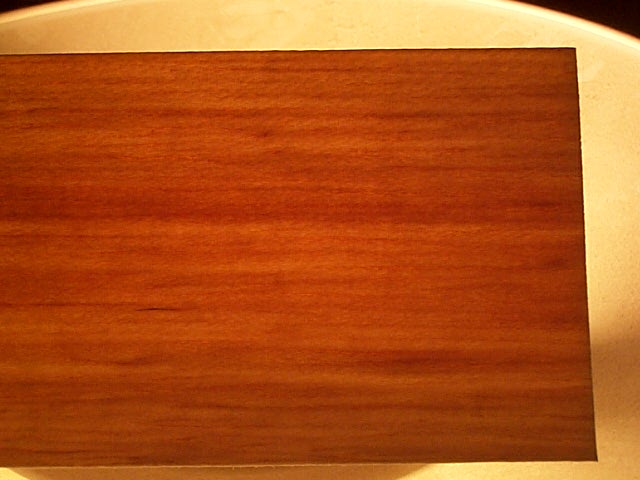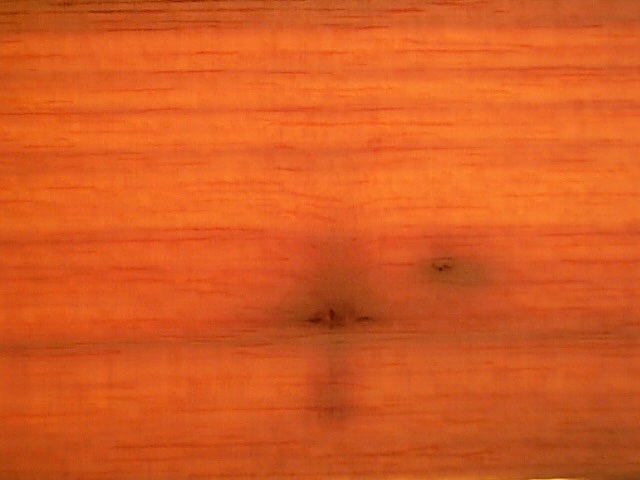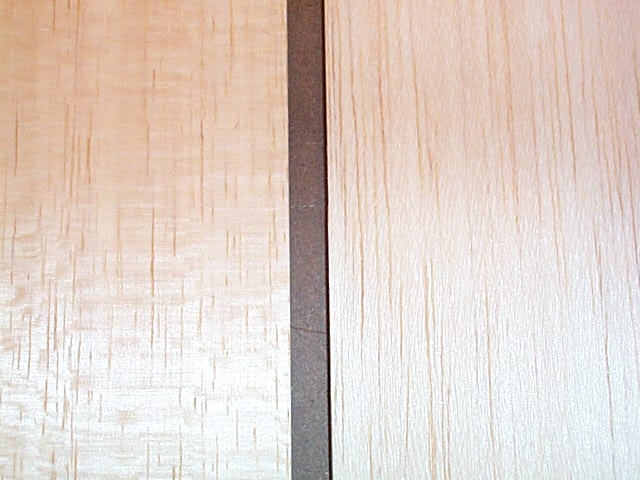
Here are the suggested wood
sizes and wood densities for building the 'Olympus'
to calculate the density
of a piece of wood, use the Balsa Density Calculator
| Description | Wood Size
(inches) |
Density
(lbs per cubic ft) |
Wood Grain |
| wing spars | 1/16 x 1/8 | 6 to 8 | A or B |
| stab spars and fin | 1/16 x 1/16 | 5 to 7 | A or B |
| wing and stab ribs | 1/16 sheet | 4 to 7 | A or B |
| wing posts | 1/8 x 1/8 | 10 to 12 | Any |
| body | 3/16 x 3/8 | 5 to 6 | C |
| tail boom | 1/8x3/8 tapered to 1/8x1/4 | 5 to 6 | C |
I would suggest taking a
scale to your local hobby shop and weighing some balsa wood, here is a
table of balsa wood weights (in grams) for you to use:
| Sheet size | 4 lb | 5lb | 6lb | 7lb | 8lb | 9lb | 10lb | 11lb | 12lb |
| 1/16 x 3 x 36 | 7.2 | 9.0 | 10.8 | 12.6 | 14.4 | 16.2 | 18.0 | 19.8 | 21.6 |
| 1/8 x 3 x 36 | 14.4 | 18.0 | 21.6 | 25.2 | 28.8 | 32.4 | 36.0 | 39.6 | 43.2 |
| 3/16 x 3 x 36 | 21.6 | 27.0 | 32.4 | 37.8 | 43.2 | 48.6 | 54.0 | 59.4 | 64.8 |
You should also look at the wood and check for abnormalities and non uniformness in the wood. I have taken some photos showing bad spots in the wood. You can hold the sheet up to the light or place a flashlight behind the wood to see the wood grain structure.
This sheet is OK to use.
The grain lines are running parallel with the length of the sheet and the
color is fairly uniform indicating that the wood is of fairly uniform density.

Now note the contrast in
this piece of wood below. See how some spots are light and others are heavy.
The light spots may be 4 pound wood and the dark spots may be around 8
pound. A sheet like this will give an average weight of around 6 pounds,
but in reality it is made up of light and heavy wood combined. So care
must be taken to not only check the wood for density, but to make sure
it is uniform. Sometimes I will find a sheet which is good except for a
portion maybe 1" wide down the length of the sheet which is real dark,
so then I cut off the lighter portion and discard the real heavy portion.

Also check the wood for blemishes
and knots. A knot like this is no good, but if it is on the end of the
sheet, and the rest of the wood is OK, then you can cut this portion of
the wood off the sheet and discard it. However, I have found that usually
a sheet with a knot in it has other smaller knots all over the sheet so
look carefully.

The other thing I would like to mention is wood grain. Balsa comes in three grains: A, B, and C grain. Because of the weight of the models, wood grain selection is not super critical, but it is still a good idea to learn about the differences and try to implement the technique. The wood on the left is C grain. Notice how it looks kind of like a cork board, and has a wavy look to it. I would buy sheets (1/8" or 3/16" thick and cut 3/8" wide) of wood like this for the motorstick and tail boom, because C grain is the stiffest of all the grains of wood and that is why we use it on the body. The reason the C grain is on the sides of the body is because the body is taller (3/8") than it is wide (1/8" or 3/16" high), so having C grain on the sides makes the body stronger in side to side bowing, where as the the taller height of 3/8" takes the load of the wound rubber motor.
The wood on the right side
is A grain. A grain and C grain are cut 90 degrees apart from each other.
So a sheet of A grain has C grain in its edges, and a sheet of C grain
has A grain on its edges. Use 1/16" sheet A grain for cutting out your
wing spars (1/8" wide) and tail spars (1/16" wide), and also use it for
making the ribs for the wing and stab. You will find A grain is easier
for cutting the curved ribs out of than C grain is, since C grain has a
tendency to split down its grain pattern if you try and cut a curve with
it.
